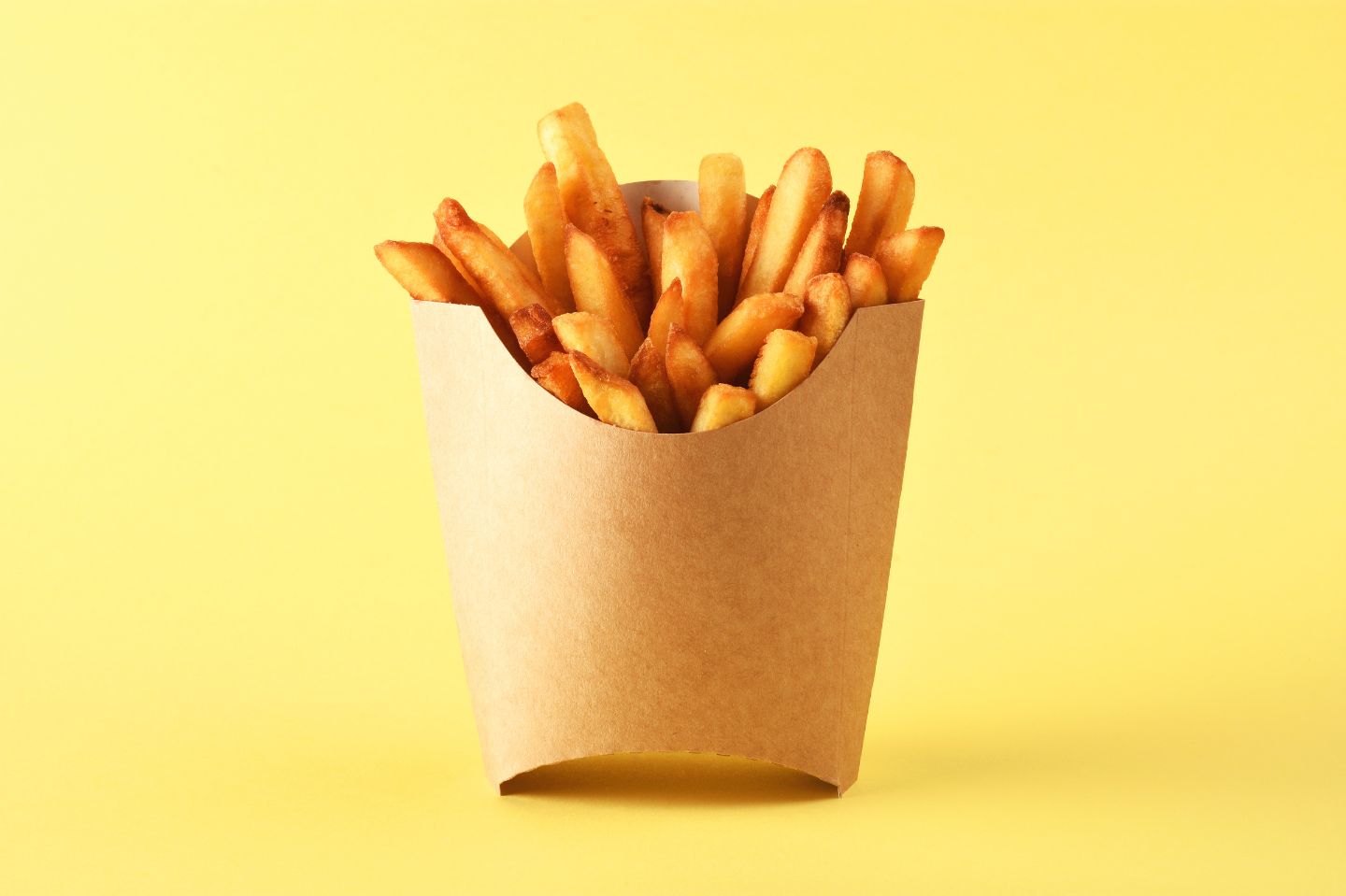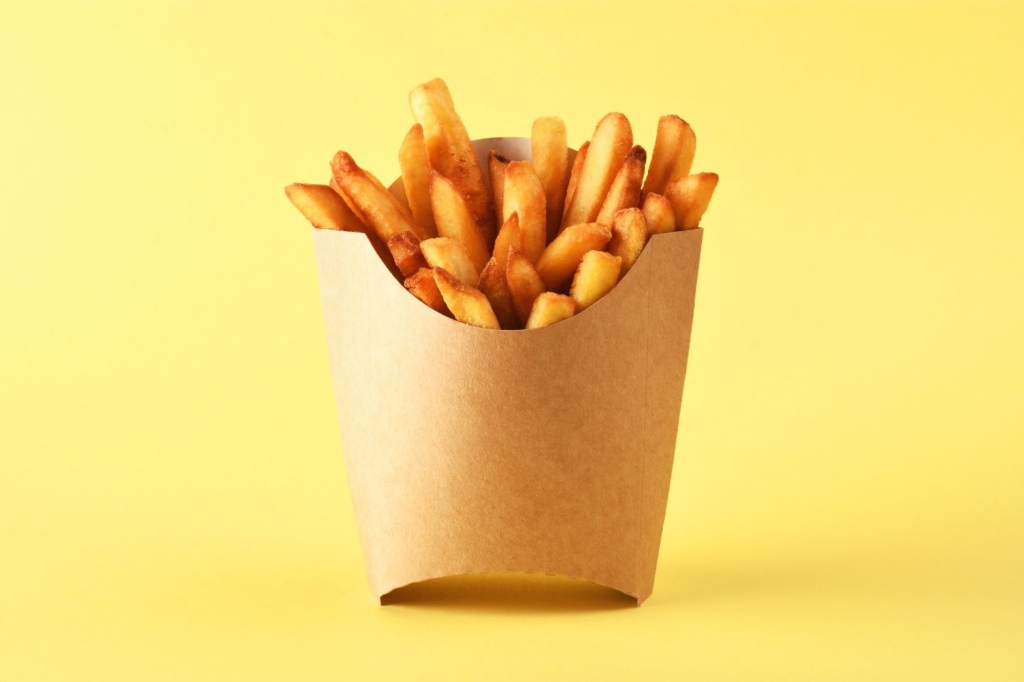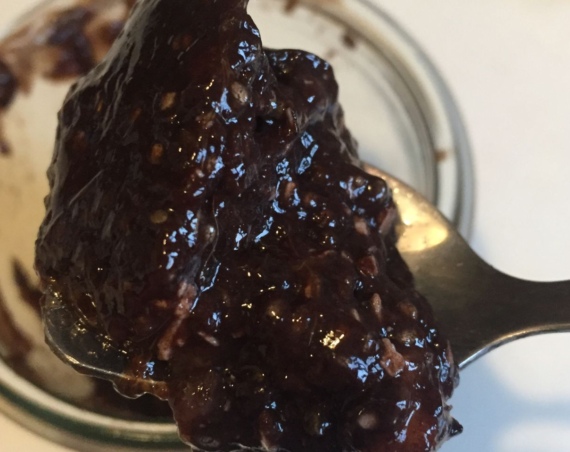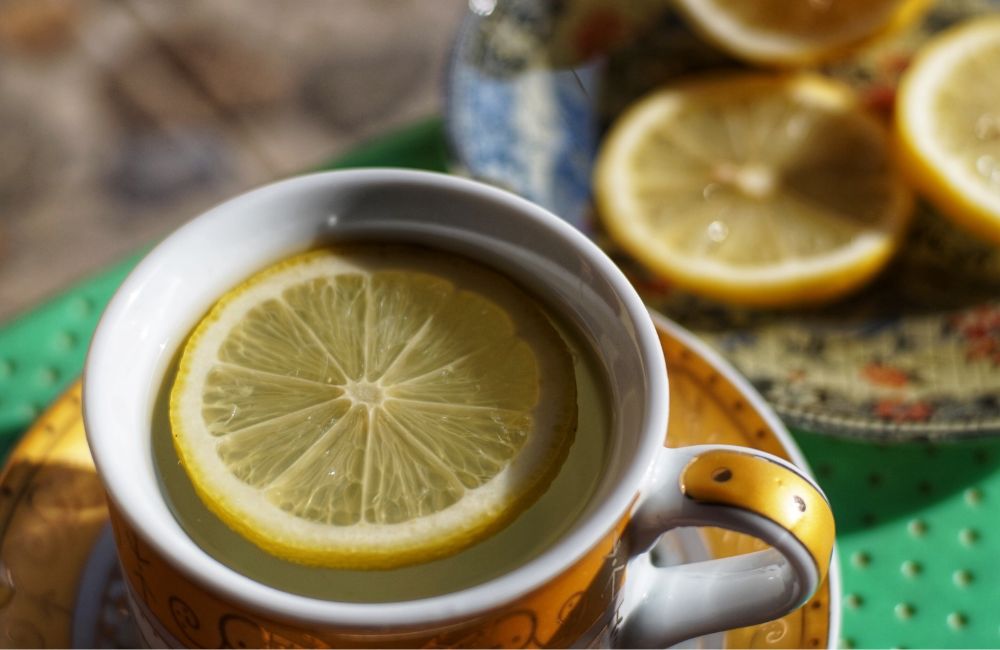
If you’re aiming to shed belly fat, also known as visceral fat, experts advise eliminating certain foods from your diet.
Abdominal fat is a common concern for many individuals. Carrying excess weight around our midsection can not only be frustrating for fitting into clothing but can also pose health risks.
The American diet, in particular, contributes to the accumulation of belly fat.
While exercise, particularly strength training, is often emphasized for targeted fat loss, modifying our dietary habits is equally essential for achieving a slimmer waistline.
Explore the following foods to avoid if you’re striving for a flatter tummy without relying solely on endless crunches.

Sugar: The Belly Fat Culprit
Sugar tops the list as one of the main contributors to belly fat accumulation.
Its prevalence in highly processed and convenience foods contributes significantly to this issue. Consuming a diet high in sugar can also lead to insulin resistance, a condition where the body struggles to recognize insulin, resulting in elevated blood sugar levels.
Left untreated, insulin resistance may necessitate medication to manage blood glucose levels safely. Insulin plays a crucial role in regulating blood sugar levels and preventing spikes in glucose levels. Elevated insulin levels can trigger increased appetite and contribute to the accumulation of visceral fat around the abdomen.
To avoid inadvertently consuming high-sugar snacks like desserts and candy bars, always check the nutrition labels on packaged foods. These labels provide information on sugar content and ingredient lists, allowing you to identify added sweeteners and monitor your sugar intake effectively.
It’s essential to be vigilant, as sugar may hide under alternative names such as high fructose corn syrup. According to the American Heart Association, women should aim for no more than 25 grams of added sugars per day (equivalent to 6 teaspoons), while men should limit their intake to 38 grams (9 teaspoons).
For perspective, a 20-ounce bottle of regular Coke contains a staggering 65 grams of added sugar—nearly double the recommended daily allowance. That’s approximately 15.5 teaspoons of sugar, highlighting the prevalence of excess sugar consumption in the average American diet, which typically exceeds the recommended limit of 77 grams per day.
Sugary beverages like soda, sports drinks, and fruit juices are major contributors to this excess sugar intake and should be consumed in moderation due to their high liquid calorie content.
Baked Goods: Watch Your Intake
Baked goods, such as bread, bagels, muffins, doughnuts, cinnamon rolls, and pastries, are often high in carbohydrates and loaded with sugar, making them treats best consumed in moderation.
Research on the effects of different bakery products on visceral fat in a healthy population of 120 individuals revealed a positive correlation between the consumption of baked goods and increased abdominal fat. Participants who opted for whole-grain options experienced less visceral fat gain compared to those who consumed white-baked goods.
Due to their high sugar and fat content, most baked goods tend to be calorie-dense and lacking in essential nutrients. Regular consumption of these treats can have adverse effects on overall health.
Opting for whole-grain products is a healthier choice. These complex carbohydrates provide more fiber, which enhances satiety and promotes a flatter belly.
Consider making your favorite baked goods at home using wheat flour or brown rice flour for healthier alternatives. By doing so, you can indulge in your cravings without compromising your health.
French Fries: A Belly Fat Hazard
Similar to baked goods, French fries are high in carbohydrates, unhealthy fats, and sodium, making them a significant contributor to belly fat accumulation. Fried foods, cooked in excessive oil, can rapidly increase fat deposition and elevate blood cholesterol levels, leading to water retention.
French fries are not only calorically dense but also low in protein and fiber, making them easy to overeat. This combination poses a significant challenge for individuals aiming to reduce belly fat.
Additionally, fried potatoes, including potato chips, contain acrylamide—a compound formed naturally during the cooking process through chemical reactions with starches. While acrylamide is considered a potential carcinogen, further research is needed to fully understand its health implications.
In the meantime, it’s prudent to limit consumption of French fries and opt for healthier alternatives whenever possible. While giving up fries entirely may not be realistic, moderation is key. Consider substituting fries with nutritious foods to support your efforts to reduce belly fat.
Crackers and Potato Chips: Foods to Avoid
Crackers and potato chips are notorious for their highly processed nature, making them a common culprit in weight gain. Loaded with carbs and unhealthy fats, they offer little in terms of essential nutrients or satiety-promoting ingredients.
To exacerbate matters, large food manufacturers continue to introduce larger packages, increasing the risk of developing unhealthy eating habits among susceptible individuals, particularly adolescents.
Instead of reaching for crackers or potato chips, opt for healthier alternatives such as cut-up vegetables like carrot or celery sticks, or enjoy fresh fruits like plums, raspberries, blueberries, grapes, or grapefruit. These options are rich in fiber, which, when paired with at least 5-10 grams of protein, can provide greater satisfaction than chips or crackers.
Enhance your snack by adding a small portion of peanut butter, Greek yogurt, or a hard-boiled egg to boost feelings of fullness and keep hunger at bay.
White Bread and Pasta: Foods to Limit
White bread and pasta are often high in carbohydrates, which can contribute to overall body fat if consumed frequently. While carbohydrates are an essential part of the diet, it’s recommended that 45-65% of your daily calories come from this macronutrient.
For instance, if you follow a 1500-calorie diet, you should aim to consume between 169-243 grams of carbohydrates per day. However, many individuals exceed this recommended intake, making long-term weight loss challenging.
A single slice of white bread typically contains 13-15 grams of carbohydrates, and when considering all the foods that incorporate bread or pasta in a day, such as sandwiches or pasta dishes, carb consumption can quickly add up.
To promote better health and support fat burning, consider swapping out refined carbs for complex carbohydrates found in whole grains. Whole grains are richer in dietary fiber compared to refined options, promoting heart health and improving metabolism.
Opt for alternatives like brown rice, quinoa, oats, Kamut, and whole-grain pasta to increase nutrient intake and support your body’s optimal functioning.
Granola Bars
Granola bars, along with many cereal varieties found in supermarkets, are often marketed as healthy options. However, their ingredient lists may contain additives that undermine your efforts to achieve a flat tummy or visible abs.
One significant concern is added sugars. Excessive consumption of sugar-sweetened products can increase the risk of insulin sensitivity and promote abdominal fat storage.
When selecting granola bars or protein bars, opt for options with minimal added ingredients and preservatives. Alternatively, consider making your own bars to ensure they meet your nutritional needs without unnecessary additives.
Sweetened Dried Fruits
While fruits are generally nutritious, dried fruits with added sugar can resemble candy in terms of their sugar content. When water is removed from fruits during the drying process, their natural sugars become more concentrated. Adding additional sugars only amplifies this effect, transforming a once-healthy snack into a sugary indulgence.
Unsweetened dried fruits can still be enjoyed in moderation, such as in trail mixes. However, it’s essential to treat them like any other high-sugar snack and consume them in small portions.”
Alcohol
While wine contains polyphenols like resveratrol, indulging in frequent refills of any alcoholic beverage, whether it’s wine, vodka, tequila, whisky, beer, or mixed drinks, can lead to rapid fat accumulation.
Alcoholic beverages can significantly increase calorie intake without providing the satiety of solid foods, hence the term “beer belly.” Moreover, alcohol consumption tends to stimulate appetite, further contributing to excess calorie consumption.
For example, a 5-ounce glass of wine contains approximately 120-150 calories, while flavored alcoholic drinks can pack even more empty calories.
To reduce calorie intake and inch closer to a flat belly, consider swapping alcoholic beverages for hydrating options like water or club soda.
Processed Meats
Processed meats like deli meats, salami, sausage, and bacon often contain high levels of preservatives and unhealthy fats, which can contribute to increased belly fat and clogged arteries.
To mitigate these risks, it’s advisable to consume processed meats in moderation and opt for leaner protein sources such as poultry, fish, tofu, tempeh, beans, legumes, nuts, and seeds.
These alternatives typically offer fewer calories and lower levels of saturated fats, reducing the risk of heart disease.
Ice Cream
Ice cream is one popular dessert often on the list of foods to avoid losing weight.
With a significant amount of fructose (sugar) and calories, it’s one of the worst foods (worst sweets!) to over-indulge in on a frequent basis.
Instead, swap out your sweets for a healthier option such as a small amount of dark chocolate with natural peanut butter, fresh fruit, or yogurt.
Removing these unhealthy foods from your diet will help you achieve a flatter belly.
Foods to Eat to Lose Weight In the Stomach
Just as there are foods to avoid when trying to slim down our midsection, there are foods that can help to prevent the accumulation of belly fat.
Let’s look at some of the best foods for a healthy diet that can help decrease your risk for abdominal obesity.
Omega-3
Omega-3 fats are considered essential, healthy fats in our diet.
This means we are not able to make them and must obtain them from the foods we eat.
Omega 3s have been shown to provide significant benefits to our health by reducing inflammation and lowering our risk for chronic diseases including heart disease and even cancer risk (8).
Because these fats are digested slower than other nutrients such as carbs, they keep us feeling full and can help reduce our urge to overeat.
Good sources of omega-3s include salmon, tuna, and other fatty fish, olive oil, nuts, such as walnuts, and seeds, such as chia and sunflower seeds.
Probiotics
Probiotics, known as good bacteria can help to target weight loss by improving the health of our digestive system.
However, it’s more than just avoiding constipation that makes probiotics favorable.
New research shows the benefits of probiotics on multiple aspects of health including decreasing inflammation, improving our immune system and of course, improving digestion (9).
Lactobacillus and bifidobacterium probiotic strains have been shown to improve weight, specifically belly fat.
Various studies have shown promising anti-obesity effects, specifically with Lactobacillus gasseri due to its suppression of fat absorption (10).
Probiotic-rich foods include fermented dairy products such as yogurt and kefir, kimchi, miso, tempeh, pickles, and sauerkraut.
If you don’t get a lot of these foods in your diet, a probiotic supplement may be a good idea.
To get the most benefit, it’s important to include prebiotics in your diet as well.
Prebiotics are the compounds found in foods, such as garlic, onions, leeks, bananas, and asparagus, that help the growth of good bacteria.
You can find these in a supplement as well if you are unable to get them from your diet.
Green Tea
Sometimes referred to as a superfood beverage, green tea, derived from the Camellia Sinensis L plant, is rich in polyphenol catechins.
Because of its many health benefits including promoting heart liver and brain health, reduced cancer risk, and improving complexion, it’s often categorized as an antioxidant (11).
These catechins, namely epigallocatechin gallate (EGCG) combined with caffeine are believed to also help promote weight loss by increasing energy expenditure and promoting fat oxidation (12).
Fat oxidation is the process of breaking down fatty acids released from fat cells, sometimes referred to as burn fat.
Oolong tea has also been studied for a similar effect.
Not much of a tea drinker? Black coffee (excluding those high-calorie coffee drinks with a lot of sugar)is another healthy drink that can burn fat fast.
Eggs
Eggs are one lean protein food you want to add to your weight loss diet to up your protein intake.
It contains essential nutrients and vitamins that can boost your health. It also contains all nine essential amino acids, making it a complete protein source.
It’s also one food that supports muscle building and muscle mass.
Choline, found in egg yolks, is an essential nutrient to boost metabolism, one the average diet often falls short in.
One large egg contains 145mg of choline, about 1/4 the recommended daily value according to the National Institute of Health.
With high protein and healthy fats, eggs are a budget-friendly, convenient addition to any meal or snack for weight loss.
Avocados
Avocado, renowned as one of the more popular health foods, is certainly one to favor.
When trying to lose weight in the belly area, choosing more satisfying foods is the best way to start, and avocados are one of those foods.
Packed full of healthy fats, avocados also have a surprisingly high fiber content at about 10g per 1 cup serving.
Light in flavor, you can add these nutrient-packed gems to many different meals or just snack on them plain.
Eat More Veggies
Wholesome veggies and fruits carry a high level of dietary fiber and other essential nutrients and vitamins.
In particular, vegetables like cauliflower, spinach, asparagus, mushrooms, and broccoli help boost metabolism and reduce belly fat.
Eating a diet high in those low-carb veggies will help you not only in regulating and managing weight and body fat but also to live a longer, healthier life.
Including them in your garden soups is a delicious and easy way to eat plenty of nutritious vegetables in the fall.
Chili Pepper – Capsaicin
Capsaicin, a compound found in chilis, hot peppers, and red peppers, plays a critical role in metabolism and has shown significant benefits in the reduction of obesity (13).
Red peppers also contain high amounts of carotenoids and vitamin C, both beneficial antioxidants that are important for immune health.
Peppers don’t have a lot of calories but they do have a lot of flavors, making them easy to add to dishes such as soups, casseroles, and stews.
Greek Yogurt
A good source of probiotics, calcium, and protein, Greek yogurt is an easy, convenient addition to any diet.
Filling and versatile, it’s a great replacement for sugar-laden treats that can also help keep down the snacking.
Add it to your morning smoothie for a protein boost or enjoy it with blueberries and other berries.
You can also replace it in recipes that use sour cream or mayonnaise for a lighter version.
Lentils
Rich in soluble fiber, lentils are a great addition to a healthy diet that can help keep our appetite under control.
High-fiber foods like lentils cause you to eat fewer calories throughout the day. Eating fewer calories can help you lose weight and take inches off your waistline.
Soluble fiber, also found in whole grains, oats, black beans, chickpeas, apples, citrus fruits, carrots, barley, and psyllium, creates a gel in the digestive tract that makes us feel more full during our meals.
It also decreases our risk of various chronic diseases such as cardiovascular disease and colorectal cancer.
Nuts
Nuts and nut butters such as pecans, walnuts, peanuts, and almonds are great sources of protein, healthy fats, and dietary fiber.
A rich source of magnesium, nuts can help to regulate blood sugar levels, specifically for those with insulin resistance.
They aren’t magic food but sprinkling these on meals such as oatmeal or added as a snack in between meals is a great way to boost weight loss.
Coconut Oil’s Medium-Chain Triglycerides
Studies show that some of the fatty acids found in coconut oil can help regulate appetite and increase abdominal fat loss (14, 15).
Abdominal fat (more precisely, visceral fat) is a type of body fat located within the abdominal cavity, near organs.
MCTs found in coconut oil appear to be effective in reducing this type of belly fat, compared to LCTs.
Drinking Bulletproof coffee is one way you can incorporate coconut oil’s medium-chain triglycerides into your diet. You can simply add a tablespoon of MCTs to your morning coffee.
Alternatively, you can use them in your cooking by adding 1 tablespoon to your salad or soup.
And, no, you don’t necessarily have to eat a high-fat diet to incorporate MCTs into your everyday meals.
Conclusion
One of the best ways to cut down on belly fat is to eliminate or moderate junk food in your diet.
This includes sugary treats such as desserts, and candy bars, and highly processed carbohydrates such as white rice, french fries, and other foods with empty calories.
Reach for more whole foods, rich in antioxidants, protein, fiber, and healthy fats to keep you satisfied.
Swap out your alcoholic drink for water and ditch the sugary drinks for solid food to see your waistline shrink.
Toss out those sugary treats instead of whole fruits.
The goal is to increase the nutritional value of your diet and cut down on the number of calories to aid in weight loss.
If you continue to struggle with unwanted belly fat, consider meeting with a Registered Dietitian (R.D.) to help you with your weight loss efforts.


